Is your marketing request process a total mess?
One marketing team we worked with was drowning in hundreds of marketing requests from every direction, like emails, texts, and Slack messages.
They were completely overwhelmed and needed a better way.
So, we built a solution using monday.com Service that transformed their messy workflow into a simple and scalable system.
And now, we’re going to show you exactly how it works. We’ve identified 4 pain points and solved them gradually:
- A system for people to easily submit requests.
- A way to communicate with the people who submitted requests.
- Managing the submitted requests.
- Tracking KPIs and metrics all about the different requests.
But first, how do you manage your marketing requests? Is it organized or all over the place? If your current setup is stressful, keep reading. This might be the system you didn’t know you needed.
And if you want to watch the whole process in a tutorial, check this YouTube video below:
1. Unified Request Submission
The marketing team we worked with did not have any dedicated channel for other departments to submit requests.
So, the first thing we built was a centralized portal using monday Service.
Instead of asking for help through email or chat, every department now had one place to go.
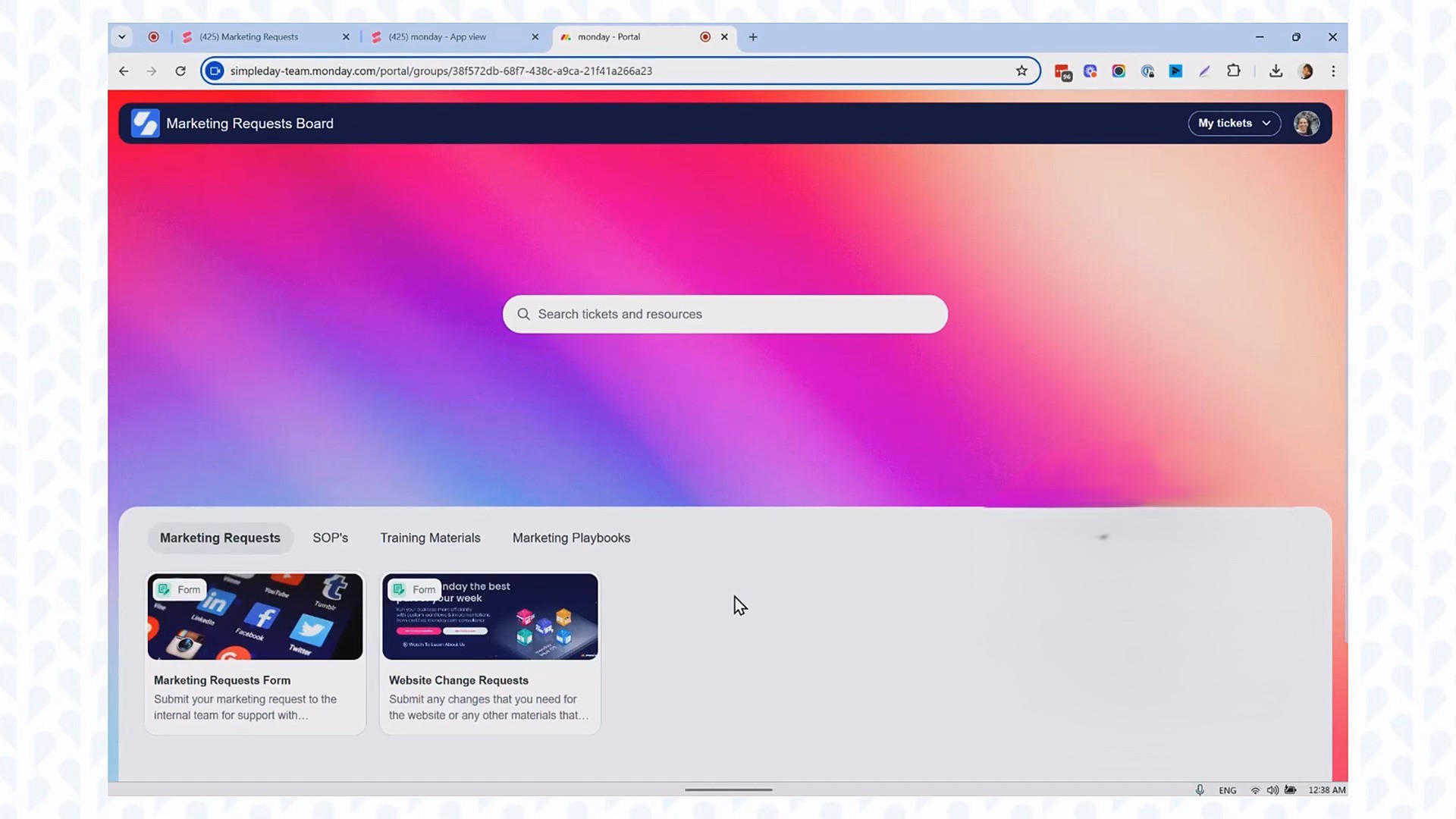
The portal has:
- Two smart forms: one for Marketing Requests and one for Website Changes
- Helpful resources like SOPs, training guides, and playbooks
- A search bar to find past requests or answers to common questions
To submit a ticket, anyone outside the marketing team just needs to log in and fill out a form.
Additionally, users can fully manage their support tickets with ease from this portal. From the “My tickets” section, you can view all your open and resolved tickets in one place. You can open each ticket to view detailed information, including status updates and resolution notes.
This centralized view ensures that external teams, which is anyone outside of marketing, can stay informed about the progress of their tickets. Once a ticket is resolved, its status is updated accordingly.
The portal brought order to the messy system instantly. No more missing requests. No more guessing who asked for what.
2. Communication with Request Submitters
Through the portal, users can now submit requests by using the Marketing Requests Form. They need to fill out a guided form that adjusts based on their selections, whether they need a video, social media post, or another asset.
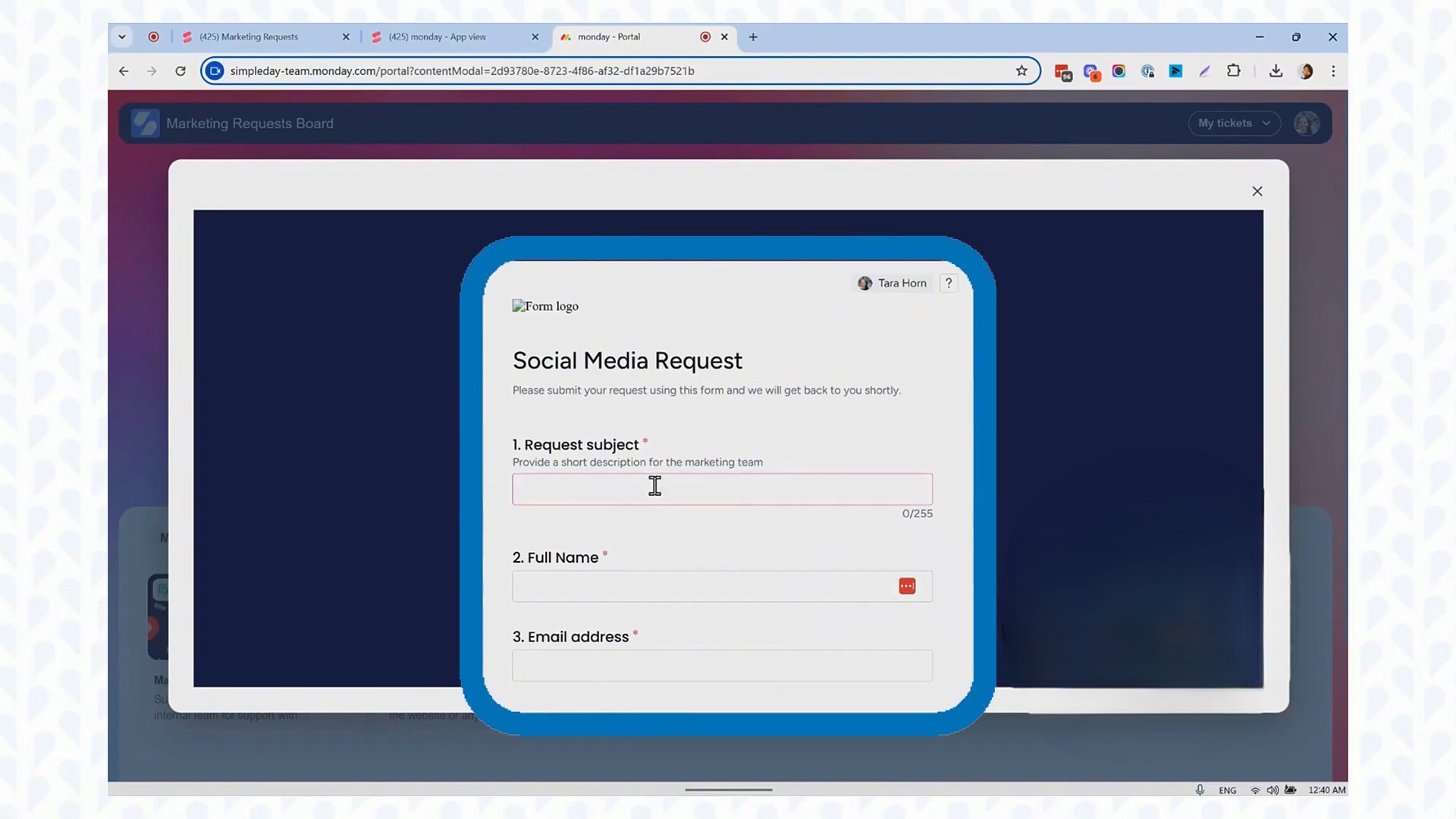
Required fields ensure all essential details are captured, like department, target audience, go-live date, and content brief uploads.
Now that requests are submitted, let’s look at how the marketing team can manage them efficiently. Monday Service addresses two key needs: keeping communication clear with requesters and organizing all incoming requests in one place.
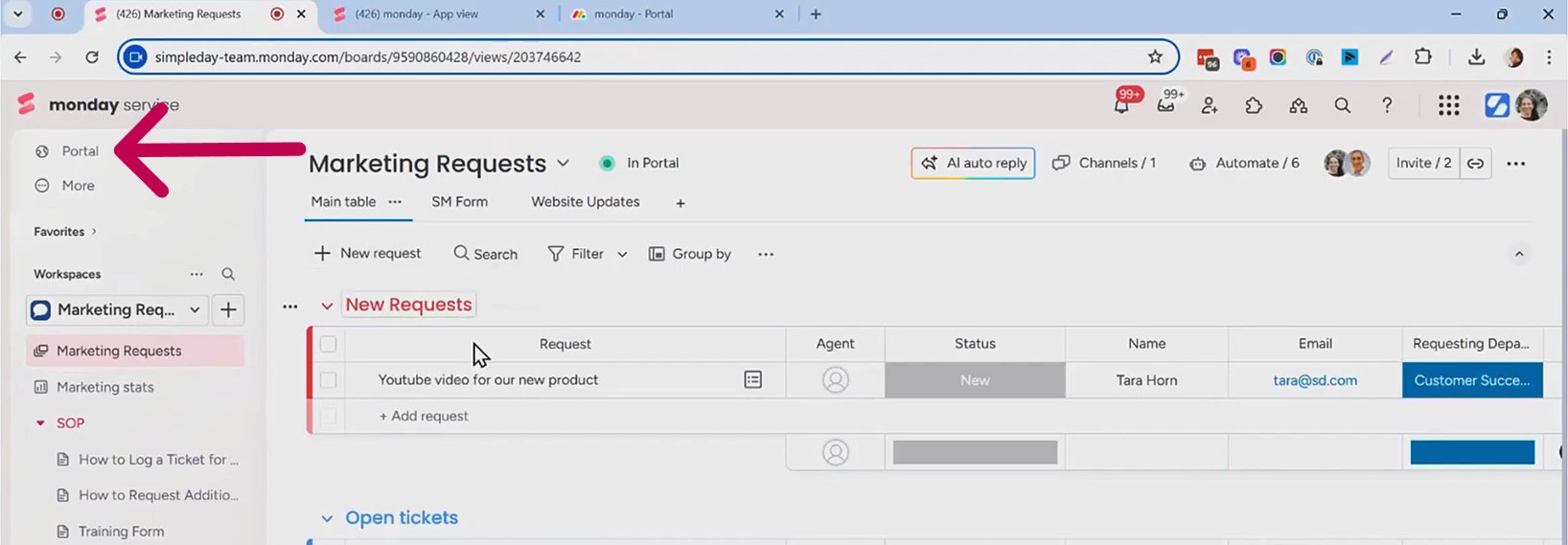
Within the marketing requests board, you’ll see familiar features from Work Management, like templates, quick search, and workspaces, but arranged to support service workflows.
A standout feature is the portal, where requests are submitted and tracked. Another is channels, which let you connect multiple sources, like email addresses, so all requests funnel into one system.
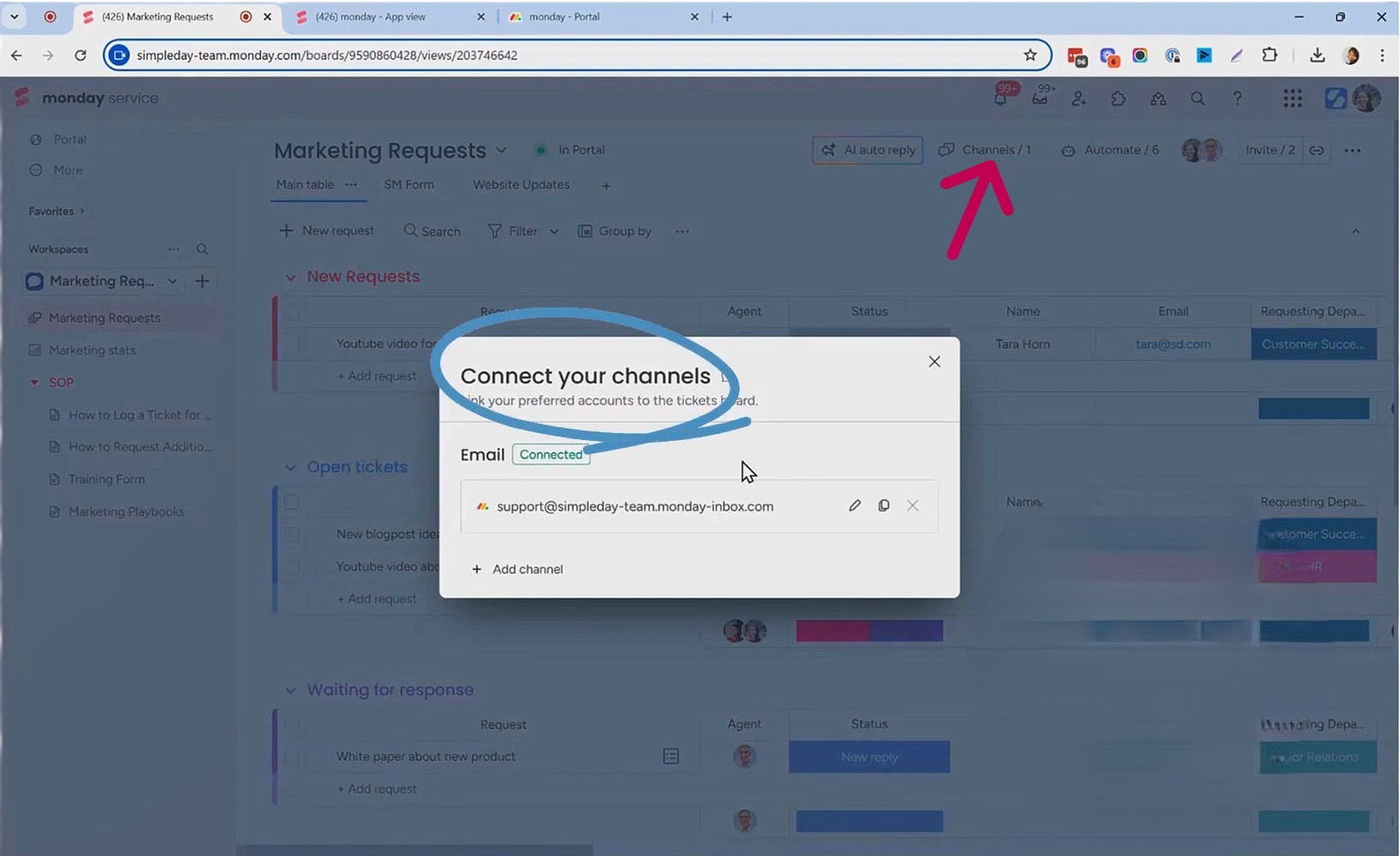
Inside the Marketing Requests Board, the team can efficiently manage every stage of a request, from submission to completion. The board has these following groups:
- New Requests
- Open Tickets
- Waiting For Response
- Requests Being Worked On
- Completed Requests
Each ticket showed all the important details: who submitted it, what they needed, deadlines, and more.
Each request is submitted as an item, and the item card is fully customized to include all necessary details: status, email address, description, priority, request type, and more. It also includes other information, such as the submitting department, target audience, and specific goals.
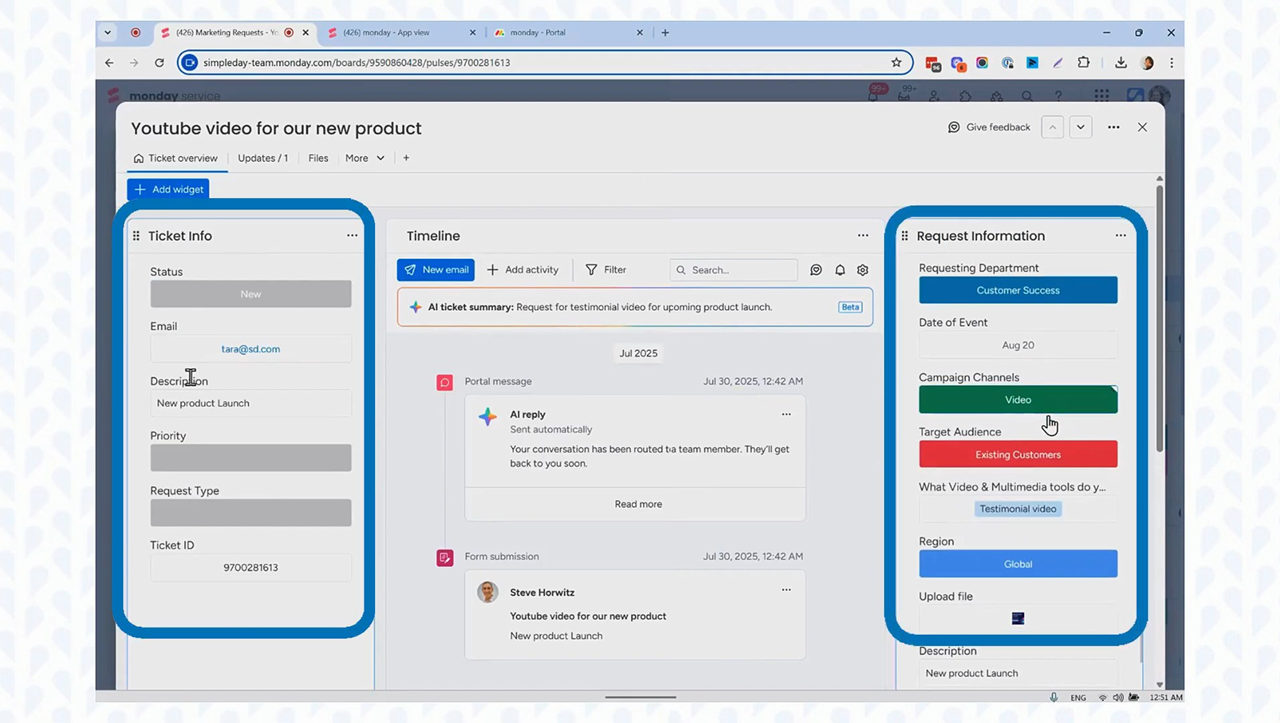
From this “Ticket overview” option, the marketing team can triage requests, identifying what needs follow-up or clarification. For example, they can send an automatic email back to the requester if more information is needed, generated right from the item, complete with the ticket title.
To streamline communication, there are options for setting up automations. After the submission of a request, the requester receives a confirmation email.
3. Managing the Requests
The next phase in managing marketing requests is actually executing the work. Once a request moves to “Ready to Start Work,” an automated workflow kicks in, triggering the creation of a task in the Work Management board.
This task contains all the key details from the original request, whether it’s a social media graphic, video, eBook, or another asset.
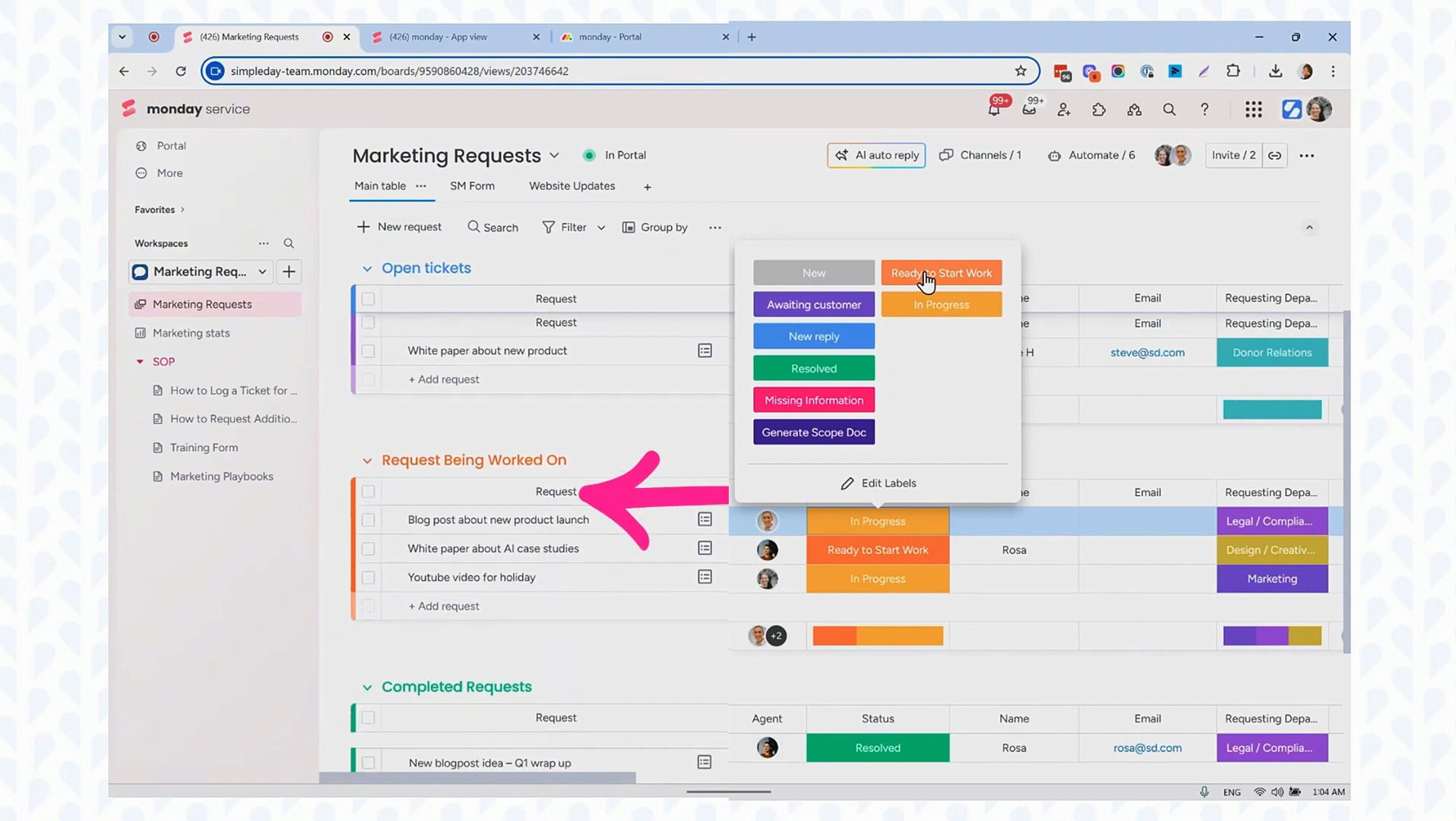
This setup creates a seamless connection between the Marketing Requests board and the Task board, giving full visibility into both the request and the work in progress.
Automations keep everything in sync. When you mark a task as “Completed” in the Task board, the original request automatically changes to “Resolved.” This not only streamlines internal processes but also ensures notifying the requester, effectively closing the loop.
4. KPI Tracking
The final challenge the marketing team faced was tracking key metrics and KPIs. To solve this, we built a custom dashboard that offers a clear, visual overview of all request data in real time.
This dashboard displays valuable widgets that give managers the insights they need to make informed decisions.
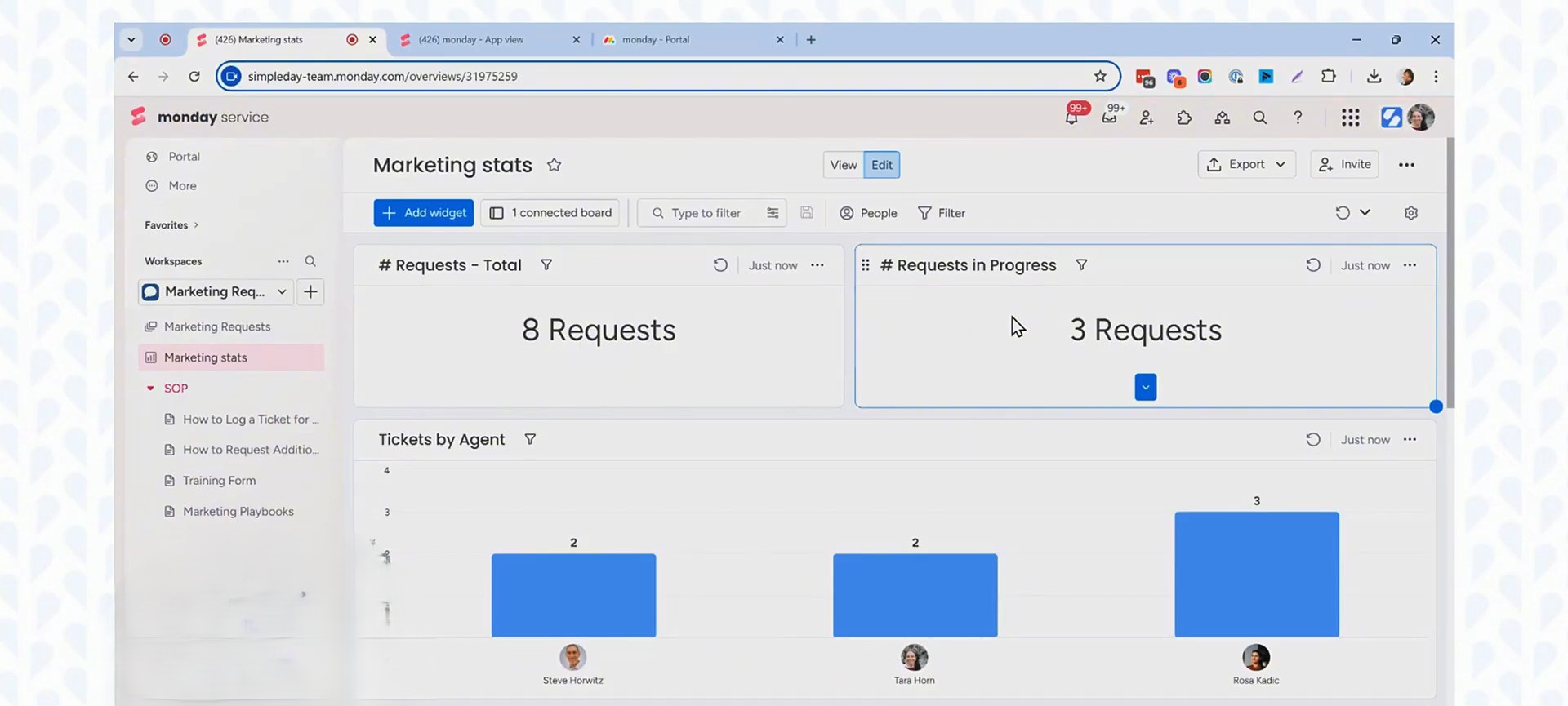
At a glance, you can see the total number of requests, how many are in progress, and a breakdown of tickets by agent, giving visibility into workload distribution.
Some widgets the dashboard has are:
This dashboard showed:
- How many total requests they had
- Which ones were still in progress
- Who was handling each ticket
- Which departments were sending the most requests
- The type of targeted audience
- The regions and request statuses
It gave the team leaders instant insight. They could spot trends, like a department sending in too many small requests or a sector that wasn’t getting enough attention.
How to Build a Similar System
Want to create something like this yourself?
Here’s a quick breakdown of what’s going on behind the scenes:
a. Portal Customization
Inside monday.com, you can:
- Brand your portal with your colors, name, and background
- Add forms, resources, and links to guide users
- Organize content by department or request type (like Creative, Content, or Design)
b. Permissions
Control who can see what. You can limit access to internal teams or allow anyone with a link to submit a form.
c. Built-In AI Tools
Some other smart features you can get in monday.com are:
- AI Ticket Summaries so team members can scan requests faster
- Auto-Replies based on common questions or patterns
- AI-driven tagging like urgency detection, sentiment analysis, or routing based on content
These tools help the team prioritize faster and stay organized with less effort. Need help building your own setup? Reach out, we’re happy to help. Contact Simpleday to learn more.



